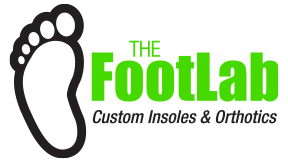Difference Pre Molded Crush Box Direct Mold Orthotics
What’s the difference? Pre-molded, Impression Foam (Crush Box), Digital Imaging and Direct Mold orthotics
Pre-molded Orthotics
Advantages- There many brands of pre-molded foot support. Dr Scholls and Superfeet are just two of the many brands of what the industry refers to as “Accommodative Inserts”. The principal advantage of these products is improved foot support at a low cost. The inserts that come with shoes and boots are designed to not be offensive to any foot shape and have very little, if any, actual foot support. Our recommendation is that Pre-molded inserts should always be used to replace the inserts that come standard in every shoe and boot.
Disadvantages- Every one of the 26 bones in the foot grows at a shape and rate that is unique to every foot. In fact, our feet are as unique to us as our fingerprints. While pre-molded inserts offer better support than the inserts that come with shoes, once an individual experiences pain in their foot the generic shape of pre-molds likely won’t suffice.
Impression Foam
Advantages- Commonly called “Crush Boxes”, Impression Foam is the quickest way to capture a mold of the foot. The patient is seated when the mold is taken, both feet, one at a time, are pushed into a shallow box of impression foam. The mold is shipped to a lab where the orthotic is fabricated.
Disadvantages- The mold is taken from an unweighted foot and the physical shape of a foot changes when a person stands on it. There’s less accuracy with this process. Also, there is a disconnect between the lab technician, the foot, and the patient’s shoe. When fit issues arise, shipping the orthotics back and forth to the lab for adjustments is time consuming.
Digital Imaging
Advantages- Speed. The technician can email the scan to the lab or, in some cases, 3D print an orthotic from the scan on site. It takes fewer days to fabricate a set of orthotics.
Disadvantages- In this process the scan is taken of an unweighted foot. Fit issues may arise.
Direct Mold
Advantages- The molding process uses heated orthotic blanks atop orthotic molding pillows. It allows the Pedorthist to capture a mold of a weighted foot in a corrected neutral posture. The Pedorthist is also able to evaluate the patients gait, and can fabricate the orthotics for the actual shoes the patient owns. Upon completion the Pedorthis is able to evaluate the patients corrected gait to ensure the orthotic is addressing the patients issues. Molding, fabricating and evaluation take one hour, the patient leaves with their orthotics eliminating the need to come back for another appointment to pick up their orthotics.
Disadvantages- none
